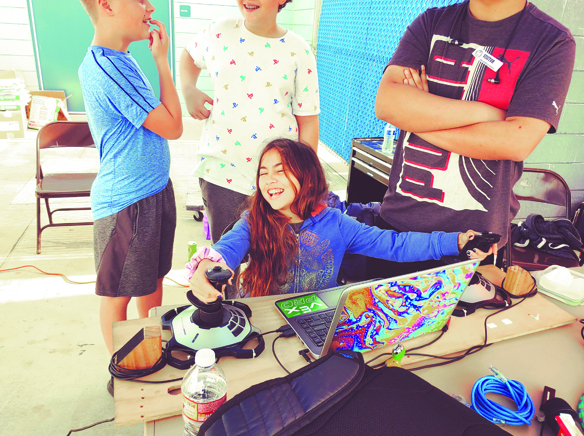
After a long struggle to gain acceptance and attention, the Los Alamitos High School Robotics Club has finally been able to attract major support and is preparing to compete against high schools around the world in 2020.
“We are finding more support,” said team captain Ashley Kim, saying the school system has helped them financially and the high school has given them a dedicated workspace.
Over the past year, the team and some of the parents met with incoming Supt. Dr. Andrew Pulver and Los Al principal Chris Vlasic to express their concerns. Also, they hosted a demonstration for the Los Al Unified School District Board where they earned the support of members Marlys Davidson and Diana Hill, among others.
Until now, the team has struggled to gain traction but now, they not only have the support of the school system, but they have found community sponsors as well.
Los Al Unified has placed a strong emphasis on STEM activities, and Kim said many of the skills team members learned in middle school are now coming in handy as they embark on their worldwide quest.
“Robotics competitions are becoming almost like sports,” said Kim. Robotics is among the world’s fastest growing industries.
According to the consulting firm Statista, the robotics industry will grow at a compounded annual rate of more than 25 percent for the foreseeable future. It is expected to become a $100 billion industry by 2025.
Currently, said Kim, “there is no formal curriculum for robotics within this system,” she said. “We try to teach ourselves” how to build robots, said Kim, though the system has taught them many of the skills they need to compete.
“The Losal Robotics Club is a group of high school students passionate in robotics who participate annually in the FIRST Robotics Competition (FRC),” said Vincent Ngo, the fundraising lead, safety captain and CAD designer.
“Our goal is to offer anyone who has an interest in a future in engineering the opportunity to learn more about the field and to acquire practical engineering skills,” he said.
With the assistance of Oak Middle Engineering Design teacher Seann Schiele, Kim and Ngo and fellow team members set up their latest robot on the middle school campus for the two lunch breaks before the holiday break.
Kim said many members of the team had learned CAD software and basic robotics at Oak before moving on to other STEM activities at Los Al High School.
“We were not there recruiting,” said Kim, but the team did hope to provide a “little inspiration” to students soon headed to high school.
The middle school students had a chance to control the team’s latest 125 pound robot, designed for their off-season competition by team member Owen Ryan. They moved the joystick on a laptop trying to get the robot to pick up a ball and drop it into a target hole.
Many students came over to watch in amazement as the Los Al robot went through its paces.
“For the parents and community-members who are not students, we hope to inspire in them a deeper appreciation for the things engineering can do, and for the students who are not yet in high school, we hope to spark their interest in the robotics field,” said Ngo.
Come next week (Jan. 4), the 25-member Los Al Robotics team will be laser focused on a new challenge issued by the FRC competition.
“On the first Saturday of the year, robotics teams all over the world receive a challenge for which they will design and manufacture a robot,” said Ngo.
Over the next six weeks, Ngo said the Los Al Robotics team will “spend their Saturdays and time after school prototyping their ideas, refining them and finally materializing the final product.”
Kim said last year, they received the help of a local metal fabricating company that donated metals which the students cut using the school’s plasma cutting machine. They cut plastic, metal, wiring and slowly assembled what the team has designed.
Kim said while there are no limits to the imagination, students must get electronics and some parts from a website so that no team has any electronic advantage over the others.
Just like the future, no one can know what their next robot will look like. One thing is certain.
At the end of the six week period in February, however, the Robotics club will have a 125 pound aluminum robot, wired and programmed and ready for the 2020 competition.











